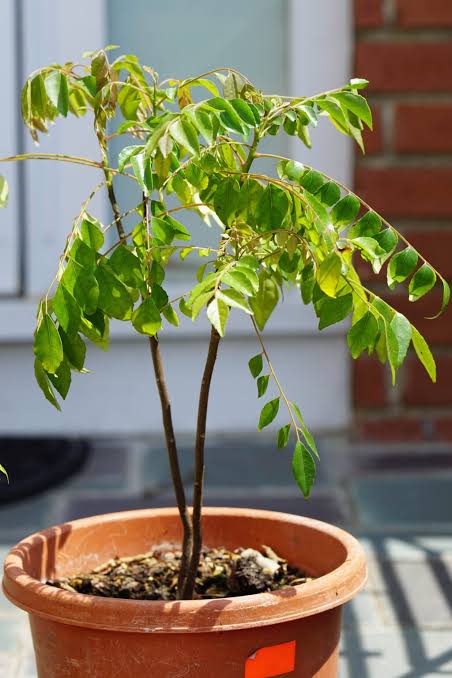Curry leaves are an essential herb in Indian, Sri Lankan, and Southeast Asian cuisine. Growing your own curry leaves plant at home not only ensures a fresh, aromatic supply but also adds a touch of greenery to your kitchen or balcony garden. With the right care, this hardy plant can thrive indoors or outdoors, giving you flavorful leaves year-round.Why Grow Curry Leaves at Home?Freshness: Nothing beats the aroma and taste of freshly picked curry leaves.Health benefits: Curry leaves are rich in antioxidants, vitamins A, B, C, and minerals that support digestion, hair, and skin health.Cost-effective: Buying fresh leaves regularly can be expensive; growing your own saves money.Easy to maintain: Once established, the plant is drought-tolerant and hardy.Choosing the Right Curry Leaves PlantH2: Seeds vs. SaplingsSeeds: Curry leaf seeds are slow to germinate (can take 2–3 weeks) but are ideal if you want to start from scratch.Saplings/Young Plants: Buying a small plant from a nursery ensures quicker results and faster harvest.H2: Container SelectionChoose a deep pot (at least 12 inches) to accommodate the root system.Ensure the pot has drainage holes to prevent waterlogging.H2: Soil RequirementsWell-draining, loamy soil is ideal.Mix in sand or perlite for aeration.Slightly acidic to neutral pH (6.0–7.0) works best.H2: Planting the Curry LeavesH3: From SeedSoak seeds overnight to improve germination.Sow ½ inch deep in moist soil.Cover lightly and keep in a warm, sunny spot.Water lightly but consistently.H3: From SaplingPlace the plant in a pot filled with prepared soil.Water thoroughly after planting.Keep in indirect sunlight for the first week to reduce stress.H2: Watering and FertilizingWatering: Young plants need regular watering; mature plants are drought-tolerant. Avoid overwatering.Fertilizing: Use organic compost or balanced fertilizer every 6–8 weeks. Curry leaves respond well to nitrogen-rich fertilizers.H2: Sunlight and TemperatureRequires 6–8 hours of sunlight daily.Thrives in warm temperatures (65–85°F / 18–30°C).Protect from frost or freezing conditions—bring indoors during winter in colder climates.H2: Pruning and HarvestingPruning: Trim new growth occasionally to maintain shape and encourage bushiness.Harvesting: Pick young leaves for cooking; they’re more flavorful than mature leaves. Regular harvesting stimulates new growth.H2: Pest and Disease ManagementGenerally pest-resistant but watch for:AphidsMitesMealybugsUse organic insecticidal soap or neem oil if needed.H2: Practical Tips for Growing Curry Leaves at HomeStart with a healthy sapling for faster growth.Use a deep pot to support the long taproot.Rotate the pot to ensure even sunlight exposure.Avoid soggy soil to prevent root rot.Mulch the soil surface to retain moisture and reduce weeds.H2: Uses of Fresh Curry LeavesCulinary: Essential in curries, dals, stir-fries, and chutneys.Medicinal: Supports digestion and improves hair and skin health.Aromatic: Adds fragrance to your garden or kitchen space.ConclusionThe best way to grow curry leaves plant at home is to start with a healthy sapling, provide adequate sunlight, well-draining soil, and regular watering. With minimal care, this hardy plant can provide a continuous supply of fresh, aromatic leaves for cooking and medicinal use. Growing curry leaves at home not only elevates your culinary creations but also adds a vibrant, fragrant touch to your indoor or outdoor garden.

